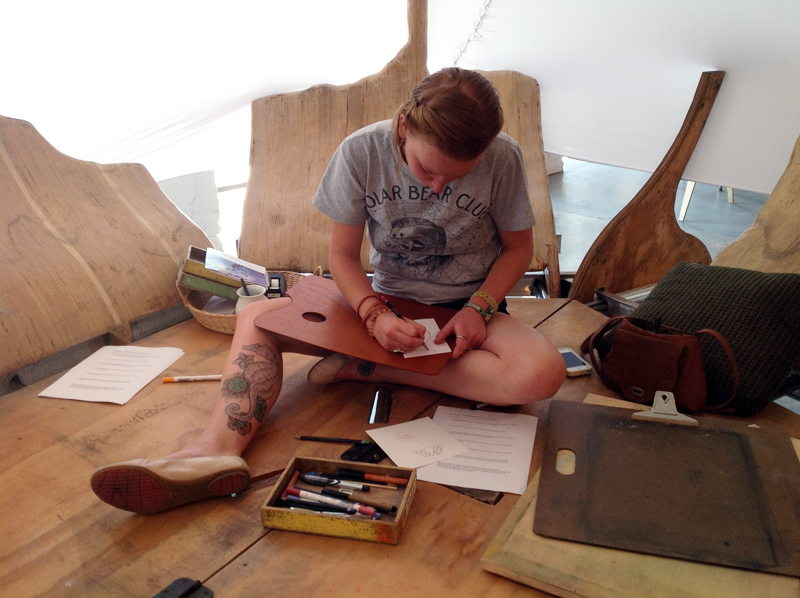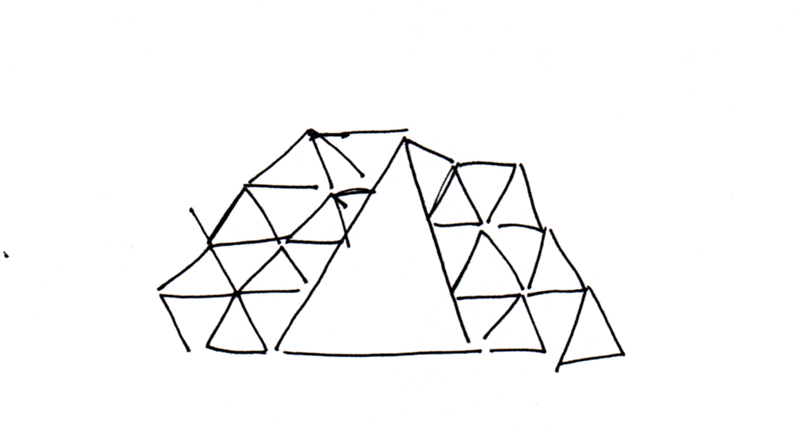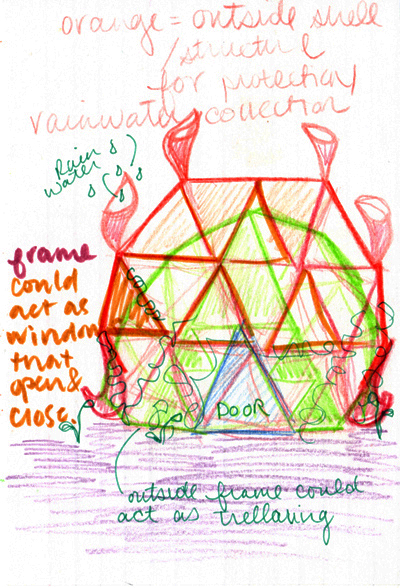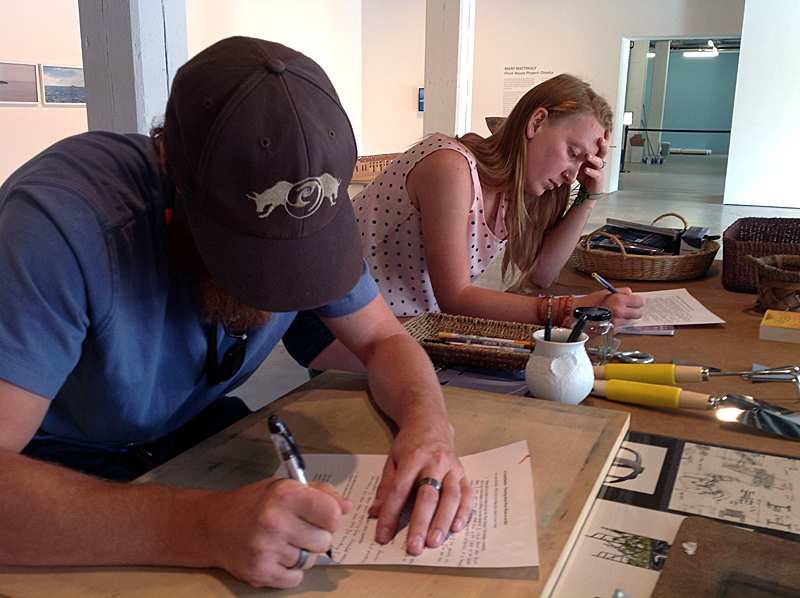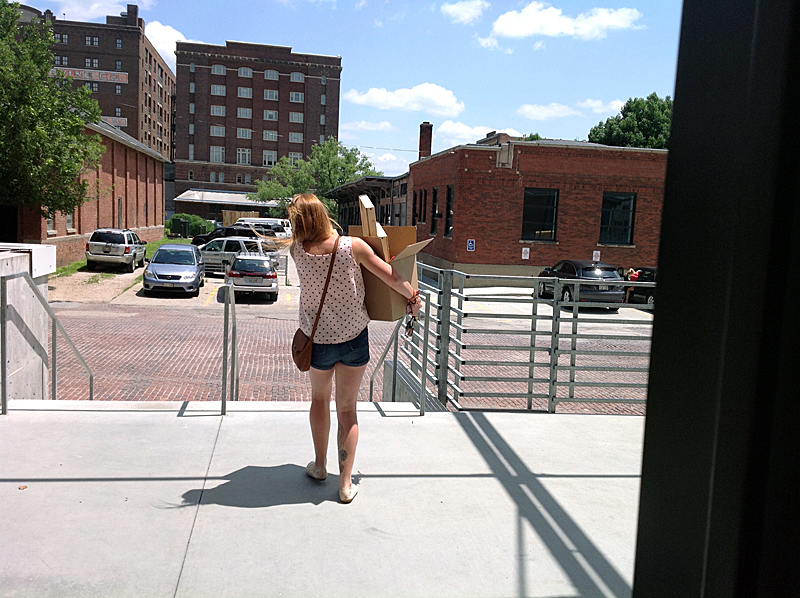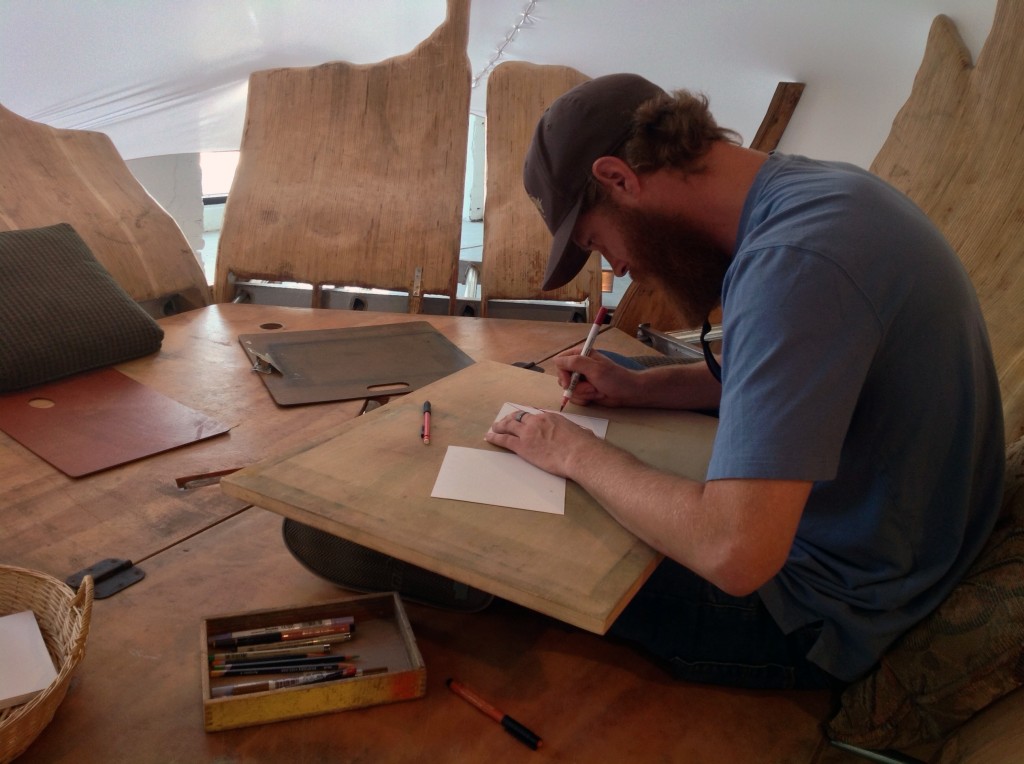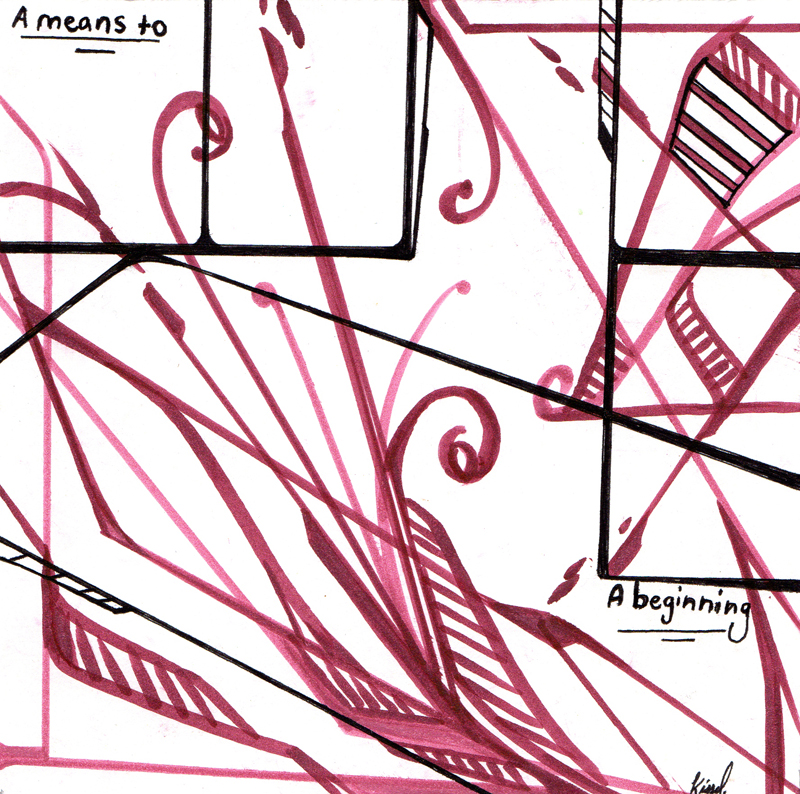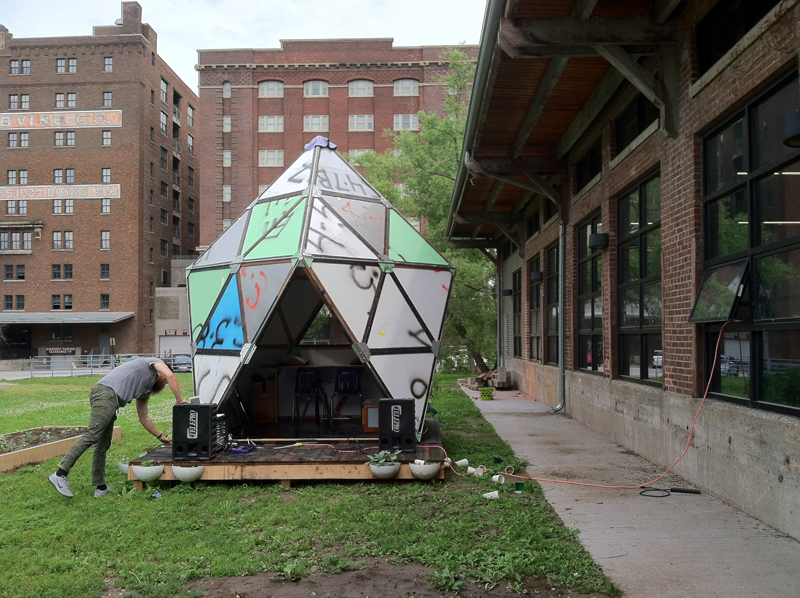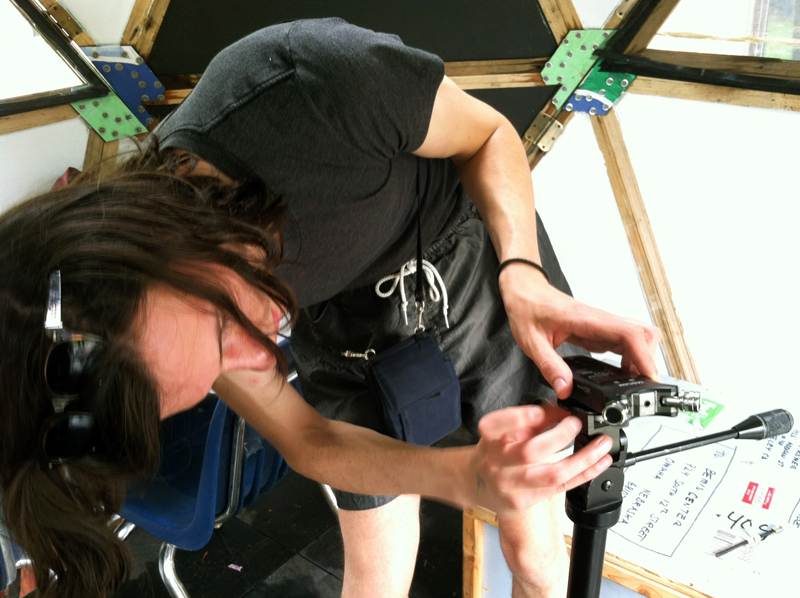“I am getting a new perspective on the world with this project, that everything can be used, but people just throw stuff away.” Cassidy Hobler
I met Cassidy at Bemis Center to check in on her paper making project, look at resource books that are on large tables in the gallery, and reflect on her experience drawing in the NYC Flock House.
She described her stage with paper making. “I want to start doing it. I imagine a paper making recipe card with very simple text written on small paper cards.”
She has everything she needs – paper, cotton scraps from t-shirts, a processor to pulverize the recycled materials. “On walks I have gathered plants, but it takes a ton of them to cook down. But I have paper.” She still needs a large tub to dip the screen into the pulp.
She suggested that we look at polyhedron templates . They are free to use, and you can print them out. This might be a layer in the Palimpsest composition. (http://www.korthalsaltes.com)
Cassidy shared with me the sketches and drawing of a Flock House she created in the NYC Flock House.
“Inside is different. Bigger. Drawing was nice, nice to sit. The shell is flimsy and people can see you, but I felt I was in my own space. Definitely.”
She started with sketches “to find out how to make the shapes.”
“In my drawing, I was envisioning how doors and windows would open and close, how water would flow to the plants. I separated utilities and structure.” (Utilities are a triangular supporting scaffold above the inner structure which is circular with triangular opening.)

